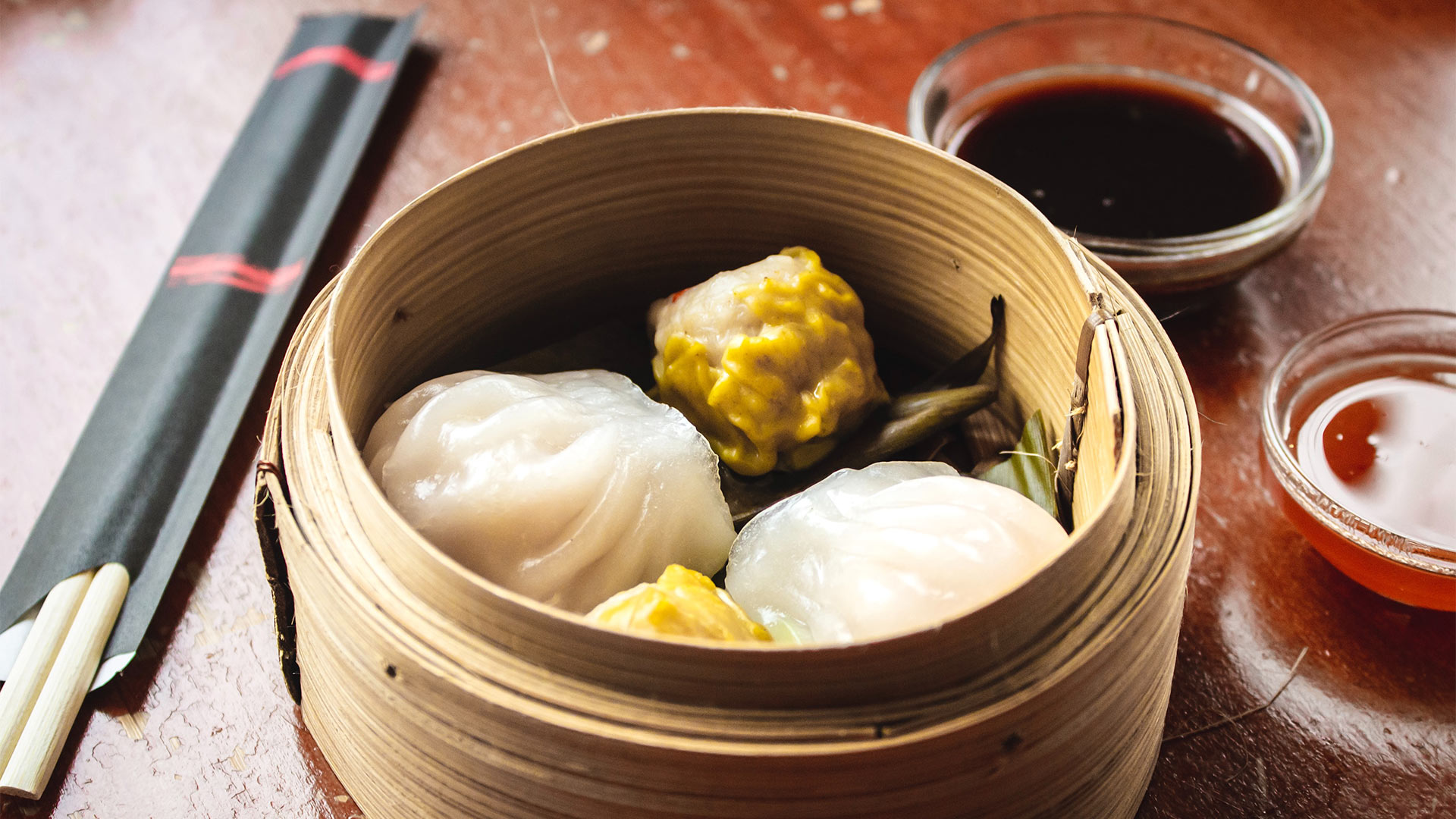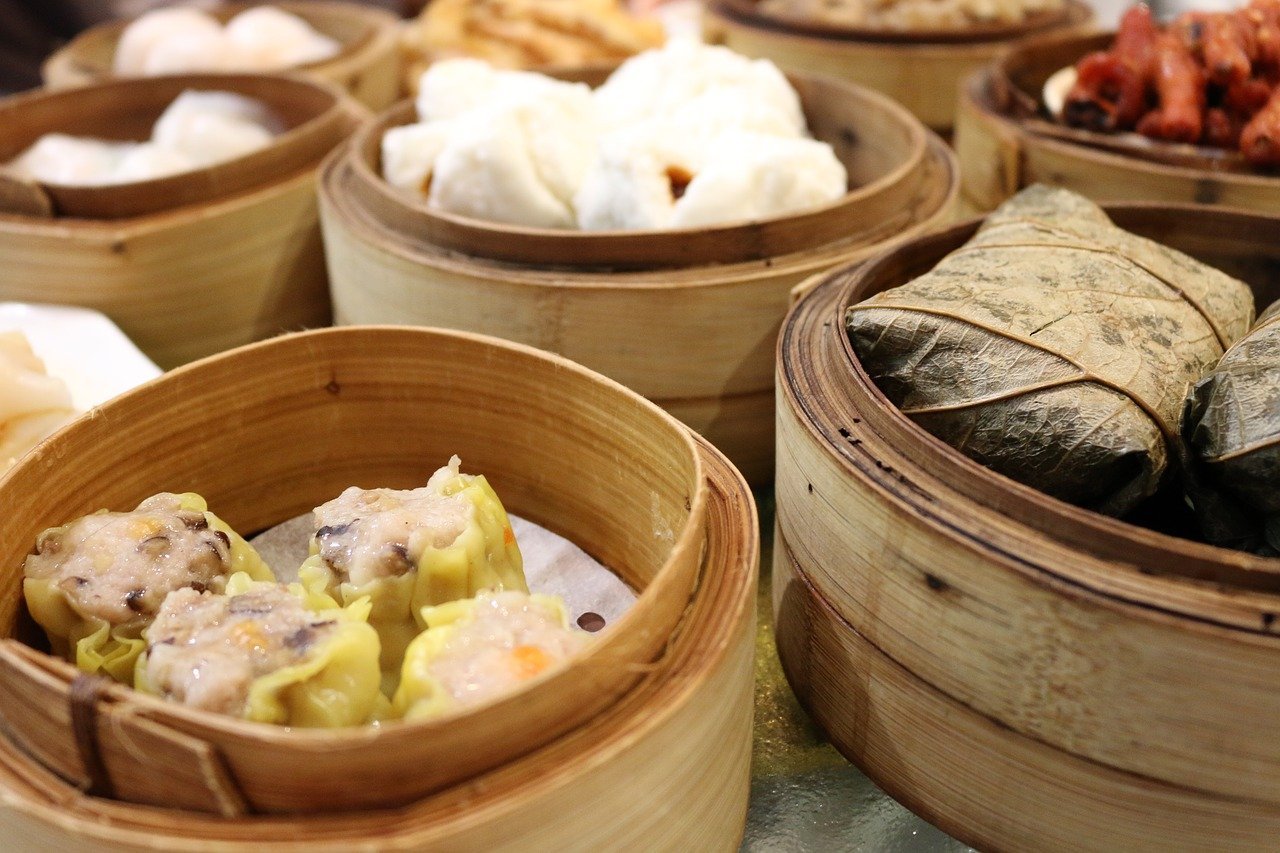Dim sum in chinese language – Embark on a tantalizing culinary adventure with dim sum in Chinese, a delectable array of bite-sized delicacies that have captivated taste buds for centuries. From its humble origins to its modern-day reincarnations, dim sum offers a rich tapestry of flavors and cultural significance.
Indulge in the diverse types and varieties of dim sum, each with its unique preparation methods and tantalizing fillings. Discover the art of preparing these culinary gems, from the delicate steaming of har gow to the crispy crunch of fried spring rolls.
Definition and Origin: Dim Sum In Chinese Language
/GettyImages-517833482-580cc3af5f9b58564cfda938.jpg)
Dim sum is a Chinese culinary tradition that involves a variety of small dishes served in steamer baskets or on small plates. The term “dim sum” literally translates to “touch the heart,” which reflects the delicate and flavorful nature of these dishes.
The origins of dim sum can be traced back to the Song Dynasty (960-1279) in China. During this period, tea houses began serving small snacks to accompany tea. These snacks eventually evolved into the elaborate and diverse dim sum dishes we know today.
Cultural Significance
Dim sum has become an integral part of Chinese culture and is often enjoyed as a social occasion with friends and family. Dim sum restaurants are typically bustling and lively, with customers sharing dishes and engaging in lively conversations.
Types and Varieties
Dim sum dishes are categorized based on their preparation methods, including steaming, frying, and baking. Each method produces distinct textures and flavors that enhance the dining experience.
Steamed Dim Sum
- Har Gow (Shrimp Dumplings):Delicate and translucent dumplings filled with fresh shrimp, offering a juicy and savory bite.
- Siu Mai (Pork and Shrimp Dumplings):Open-faced dumplings with a combination of ground pork and shrimp, topped with a colorful carrot garnish.
- Zongzi (Sticky Rice Dumplings):Pyramid-shaped parcels made with glutinous rice, stuffed with various fillings such as meat, beans, and vegetables.
Fried Dim Sum
- Wonton (Fried Wontons):Crispy wonton wrappers filled with a savory mixture of meat and vegetables, served with a dipping sauce.
- Lo Mai Gai (Glutinous Rice with Chicken):Steamed glutinous rice wrapped in lotus leaves and filled with tender chicken and other ingredients.
- Egg Tarts (Portuguese Custard Tarts):Flaky pastry shells filled with a creamy and sweet egg custard filling.
Baked Dim Sum
- Pineapple Buns (Bo Lo Bao):Sweet and fluffy buns shaped like pineapples, with a crispy crust and a pineapple paste filling.
- Eggplant Dumplings (Qie Zi):Eggplant slices stuffed with a savory filling, coated in batter and deep-fried until golden brown.
- Char Siu Sou (Barbecued Pork Buns):Steamed buns filled with tender and flavorful barbecued pork.
Ingredients and Preparation
Dim sum preparation involves a combination of fresh ingredients, skilled techniques, and meticulous attention to detail. The ingredients used in dim sum vary widely depending on the specific dish, but some common components include:
- Flour:Used to create wrappers and dough for dumplings, buns, and other items.
- Meat:Pork, chicken, beef, and seafood are frequently used as fillings.
- Vegetables:Cabbage, bok choy, carrots, and mushrooms are common additions.
- Seafood:Shrimp, scallops, and fish are often used in dim sum dishes.
- Sauces and seasonings:Soy sauce, oyster sauce, sesame oil, and various spices enhance the flavors.
The preparation of dim sum involves several techniques, including:
Steaming
Steaming is a common method used to cook dim sum. It involves placing the dumplings or buns in a steamer basket over boiling water. The steam gently cooks the food, resulting in a delicate and moist texture.
Frying
Frying is another popular technique used in dim sum preparation. Dumplings or spring rolls are typically pan-fried or deep-fried until golden brown and crispy.
Wrapping
Wrapping is a crucial skill in dim sum preparation. The dough is rolled out into thin sheets and used to wrap the fillings. The wrappers can be folded into various shapes, such as triangles, squares, or crescents.
Stuffing
Stuffing involves filling the wrappers with various ingredients. The fillings can be savory, such as meat or vegetables, or sweet, such as red bean paste or custard.
Presentation, Dim sum in chinese language
Presentation is an important aspect of dim sum. The dishes are often arranged in colorful and visually appealing ways, enhancing the dining experience.
Cultural Significance

Dim sum holds significant cultural value, deeply ingrained in the social fabric of many Asian communities. It transcends mere sustenance, embodying a cherished tradition that fosters familial bonds, social gatherings, and cultural identity.
Dim sum is often enjoyed in communal settings, where families and friends gather at teahouses or restaurants to share a leisurely meal. The act of selecting and savoring the diverse array of dim sum dishes creates a convivial atmosphere, fostering conversations and strengthening relationships.
Dim Sum in Teahouses
Teahouses have long been the heart of dim sum culture. These establishments offer a tranquil ambiance where patrons can sip fragrant tea while indulging in a selection of dim sum delicacies. The leisurely pace of teahouses encourages relaxation and allows for extended conversations, making them ideal venues for social gatherings and business meetings.
Dim Sum in Restaurants
In recent years, dim sum restaurants have gained popularity, providing a more formal setting for enjoying this culinary tradition. These restaurants typically offer a wider variety of dim sum dishes, often including more elaborate and innovative creations. While the atmosphere may be less relaxed compared to teahouses, dim sum restaurants still serve as a popular destination for celebrations and special occasions.
Regional Variations
Dim sum, the delectable Cantonese cuisine, exhibits regional variations across China, each boasting unique characteristics and flavors.
The culinary landscape of dim sum is as diverse as China itself, with variations in ingredients, preparation techniques, and presentation. These regional differences reflect the cultural influences and local culinary traditions of each area.
Northern China
Dim sum in Northern China is influenced by the region’s wheat-based cuisine. Steamed buns, such as baozi, are a staple, often filled with savory meats or vegetables. Dumplings, known as jiaozi, are another popular choice, served with a variety of dipping sauces.
Southern China
Southern Chinese dim sum is known for its delicate flavors and use of fresh seafood. Steamed rice rolls, called cheung fun, are a favorite, often filled with shrimp, pork, or vegetables. Fried dim sum items, such as spring rolls and wontons, are also common.
Eastern China
Dim sum in Eastern China, particularly in Shanghai, features a balance of sweet and savory flavors. Xiao long bao, delicate soup dumplings, are a signature dish. Other popular items include shumai, steamed pork and shrimp dumplings, and fried dough sticks, known as youtiao.
Western China
Dim sum in Western China, influenced by the region’s Muslim population, often incorporates halal ingredients. Lamb and beef are commonly used in dumplings and buns. Steamed bread, called naan, is also a staple.
Modern Interpretations
Dim sum has undergone a remarkable evolution in contemporary dining experiences, showcasing the creativity and innovation of chefs worldwide.
Chefs are reimagining classic dim sum dishes with modern techniques and unexpected flavor combinations. These innovative approaches aim to elevate the traditional flavors of dim sum while appealing to the evolving tastes of diners.
Creative Dim Sum Reinventions
- Deconstructed Dim Sum:Chefs are breaking down traditional dim sum dishes into their individual components, allowing diners to experience the flavors in a new way. For example, a deconstructed shrimp dumpling may present the shrimp filling separately from the dumpling wrapper.
- Molecular Gastronomy Techniques:Chefs are experimenting with molecular gastronomy techniques to create dim sum dishes with unique textures and presentations. For example, a chef may use spherification to create a liquid-filled dumpling that bursts with flavor upon biting.
- Global Flavors:Chefs are incorporating global flavors into dim sum, creating fusion dishes that blend traditional Chinese techniques with international influences. For example, a dim sum dish may feature a filling inspired by Mexican cuisine or a sauce infused with Japanese flavors.
- Artistic Presentation:Chefs are paying increasing attention to the presentation of dim sum dishes, transforming them into visually stunning works of art. Dim sum platters may be adorned with edible flowers, geometric shapes, and vibrant colors.
Closing Notes

As we conclude our exploration of dim sum in Chinese, we marvel at its enduring legacy and adaptability. From traditional teahouses to contemporary dining experiences, dim sum continues to delight and inspire food enthusiasts worldwide. Its regional variations and modern interpretations showcase the boundless creativity and artistry of Cantonese cuisine.
Popular Questions
What is the literal meaning of “dim sum” in Chinese?
Dim sum translates to “touch the heart” in Chinese, reflecting its ability to evoke joy and satisfaction.
How is dim sum typically served?
Dim sum is traditionally served in small bamboo steamers or on small plates, accompanied by tea.
What are some popular dim sum dishes?
Popular dim sum dishes include har gow (shrimp dumplings), siu mai (pork dumplings), and char siu bao (barbecued pork buns).